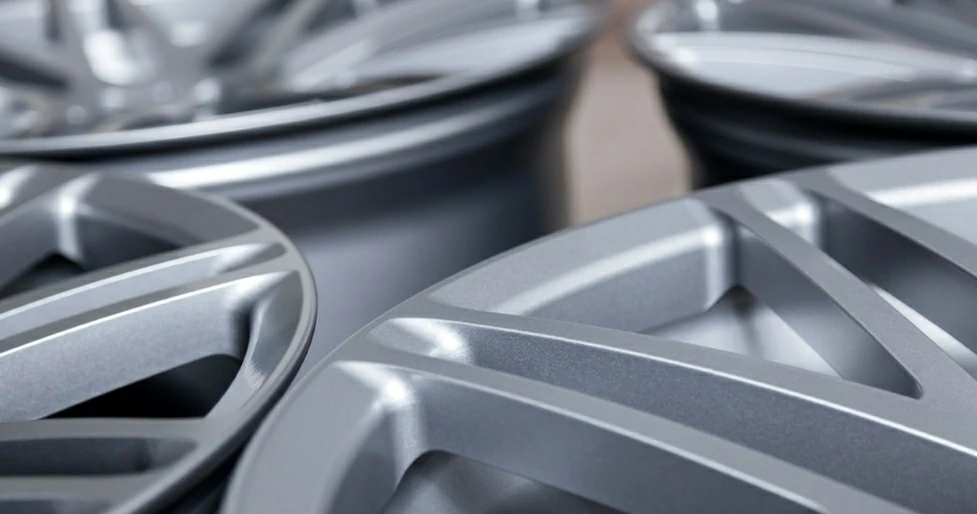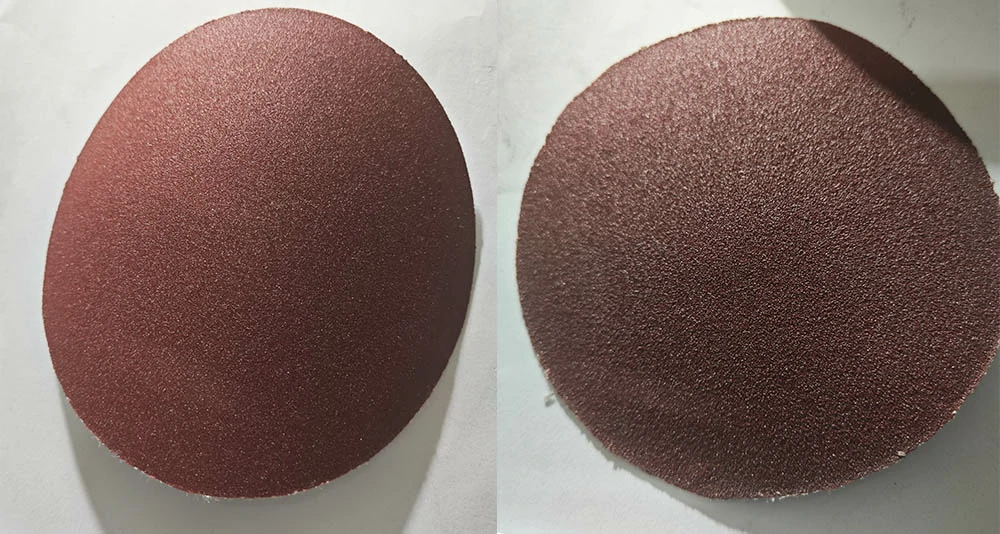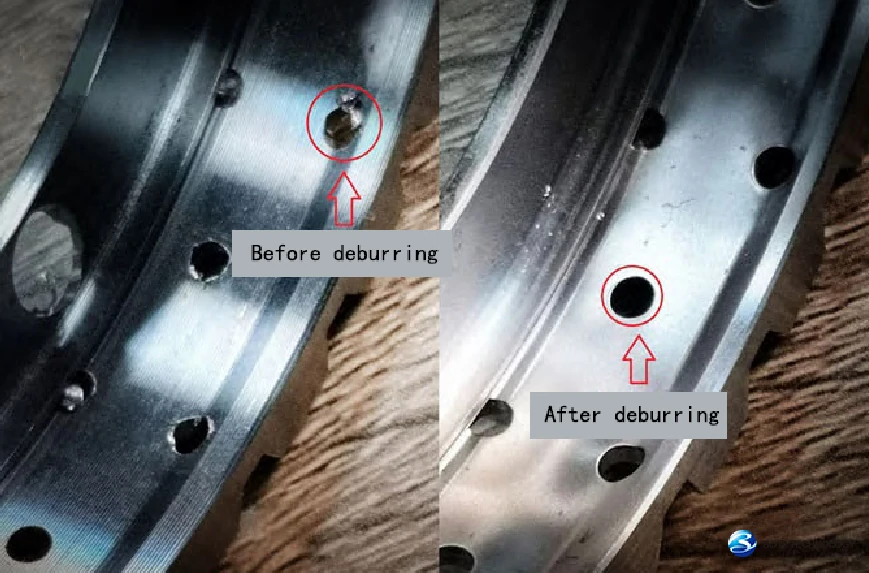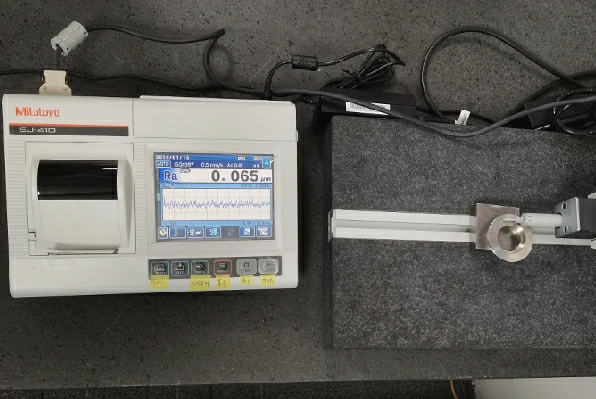Polished titanium refers to the precision processing of the surface of titanium parts to improve their aesthetics and functional quality. Especially in the medical field, highly polished titanium implants can reduce friction with human tissues and improve patient comfort.
Polishing titanium involves multiple steps and delicate operations. Each step, from initial preparation to final polishing, requires strict control. The following step-by-step guide will walk you through the process of polishing titanium parts.
What is Titanium Polishing, and Why is it Necessary?

Polishing titanium is a refined craft that utilizes polishing wheels and polishing wax to remove tiny defects and irregularities from the surface of titanium parts, presenting them with a smooth, shiny appearance. The surface roughness of titanium parts after polishing can be controlled within the range of 0.1-0.05 micrometers Ra.
Why is polishing titanium parts necessary? Imagine, in the high-end watchmaking industry, those tiny and delicate gears and bearings. If their surfaces have any irregularities, it could lead to time discrepancies, increased friction, and even failures in precision operation. Polishing titanium parts is precisely to eliminate these potential defects, ensuring the accuracy and durability of watch components. Additionally, the polished surface is less susceptible to corrosion from external sources, as corrosive substances find it difficult to adhere to smooth, seamless surfaces.
How to Polish Titanium: A Step-by-Step Guide
Polishing titanium parts is a process that requires precise operation, involving multiple steps and techniques. The following is a step-by-step guide for polishing titanium parts:
Preparation
Select appropriate polishing tools such as polishing machines, polishing cloths, and polishing compounds according to the size, shape, and surface requirements of the titanium parts. Ensure that the work area is tidy and have all necessary polishing auxiliary tools prepared, such as cleaning agents, sandpaper, abrasives, etc.
Degreasing and Cleaning Parts
Remove dirt, grease residues, and other impurities from the surface of titanium parts to ensure a smooth polishing process and achieve the desired polishing effect.
Use professional degreasers, such as spray rinsing, to remove these greases.
Immerse the titanium parts in ample clean water to ensure thorough wetting of the surface. Then, add a moderate amount of mild cleaning agent, such as soap, ammonia, or glass cleaner, to help remove surface dirt and impurities.
Afterward, thoroughly rinse the parts with warm water to ensure all residues are washed away completely. Finally, gently pat dry with a clean towel to avoid leaving water stains or scratches on the surface of the titanium parts.
Sanding Process
Using sandpaper for initial sanding. Depending on the surface roughness of the titanium parts, choose sandpaper with appropriate grit sizes (for example, you can start with 200 grit sandpaper, then switch to 800 grit, and finally use 2000 grit, depending on the surface finish you desire). Coarser sandpaper can quickly remove surface irregularities and deeper scratches, while finer sandpaper is used for further refinement.

During the sanding process, it’s necessary to apply a moderate amount of lubricant onto the sandpaper. Lubricants help reduce friction and heat during the polishing process, thereby helping to prevent surface damage to titanium.Then, place the sandpaper on one edge of the titanium part and move it horizontally across the part until reaching the opposite edge. Repeat this step until the entire surface of the titanium part is evenly covered.
Polishing Process
Thoroughly clean the titanium surface with alcohol-based cleaning agents.
Polish the titanium surface using metal polishing compound and polishing wheels.
During the polishing process, frictional heat is generated between the polishing wheel and the titanium surface. To prevent overheating and potential damage to the titanium material, it is necessary to intermittently apply water to reduce the generated heat. Use a fine mist or spray bottle to continuously spray clean water onto the titanium surface during the polishing process to keep it wet. This effectively lowers the temperature and protects the performance of the titanium material.
The Final Finish
Even after polishing, some fine traces or marks may still remain on titanium parts.
You can apply a moderate amount of paint polishing compound onto a clean towel. Then, use another clean towel and cleaning agent to wipe the surface of the titanium part. During the wiping process, apply even pressure to ensure that the cleaning agent thoroughly penetrates the surface and helps remove any remaining grease, dirt, or other impurities. As you proceed with wiping, you may notice the color of the titanium part gradually deepening, which is a normal result of surface cleaning and polishing.
Once the cleaning is completed, spray the surface of the titanium part with clean water and gently dry it with a clean towel. Ensure that the surface is completely dry, without any remaining moisture or cleaning agent.
Different Types of Surface Finish for Titanium Polishing
Depending on the polishing force, speed, and the type of polishing wheel used, the polishing process can be divided into several stages, including rough polishing, intermediate polishing, fine polishing, and mirror polishing, each with its specific purpose and effect.
Rough Polishing
Utilize titanium alloy-specific sisal wheel or wool wheel, along with specialized titanium wax, to polish. The main goal is to make the surface of the product smooth. During this process, it is important to pay attention to the intensity and direction of polishing to ensure even force distribution and avoid uneven polishing effects.
Intermediate Polishing
Use titanium alloy-specific polishing coarse cloth wheel or fine wool wheel, combined with titanium alloy-specific intermediate polishing wax, to remove the patterns left by rough polishing and give the product surface a certain degree of brightness. This stage of polishing helps to further enhance the surface smoothness and glossiness.
Fine Polishing
Employ titanium alloy-specific cotton wheel and fine polishing wax to achieve a higher level of brightness for titanium alloy products. Through this stage of polishing, the surface graininess becomes more subtle, and the overall glossiness significantly improves.
Mirror Polishing
Utilize titanium alloy-specific loose cotton wheel and mirror gloss wax to remove the slight patterns remaining on the product surface, achieving a mirror-like gloss for titanium alloy. This stage of polishing requires high precision and expertise to ensure the desired mirror effect is achieved.
These are the stages involved in the polishing process, each contributing to enhancing the surface finish and aesthetics of titanium alloy products.
Advantages of Polishing Titanium Parts
Polishing titanium parts has multiple significant advantages, and the following are some of the main advantages:
Enhancing Appearance Quality
Through mechanical or chemical methods, surface irregularities and defects on titanium parts can be removed, making the surface smooth and glossy. This enhances the appearance quality of titanium parts and increases the visual appeal of the products.
Improving Surface Performance
By reducing surface roughness, polishing can decrease the accumulation of dirt and corrosion on the surface, thereby enhancing the corrosion resistance of the parts. Additionally, the smoother surface after polishing reduces friction with other objects, thus improving wear resistance and fatigue performance. These improvements in performance help prolong the service life of the parts and reduce the frequency of maintenance and replacement.
Enhancing Machining Accuracy
The polishing process can eliminate minor protrusions and depressions on the surface of titanium parts, making the dimensions and shapes of the parts more precise. This reduces assembly resistance and improves assembly accuracy. This not only helps improve the overall performance of the product but also reduces failures and damages caused by improper assembly.
Improving Surface Cleanliness
During the polishing process, dirt, grease, and other impurities on the surface of titanium parts are effectively removed. In some applications where cleanliness requirements are high, such as in the medical equipment and aerospace industries, polishing is an essential step.
Enhancing Lubrication Performance
The polished surface of titanium parts is smoother, significantly reducing the friction coefficient. This reduces energy loss and wear during movement, thereby improving the operating efficiency of equipment.
Conclusion
A good surface finish is a crucial reflection of part quality and value. A smooth, glossy surface not only signifies higher product quality but also enhances customer satisfaction and loyalty.
If you are seeking a professional surface finishing service provider, do not hesitate to contact us immediately. Our team possesses extensive experience and exceptional skills, ensuring that each part meets the highest surface standards. Moreover, BoYi offer customized solutions tailored to your specific requirements.
Put your titanium parts into production today
All uploads are secure and confidential.
FAQ
Yes, it is possible to polish titanium. Titanium can be polished to achieve a smooth, glossy surface finish through various mechanical and chemical methods.
To restore the shine of titanium parts, soak them in soapy water for a few minutes, then gently brush the surfaces with a soft cloth. Alternatively, use an ultrasonic cleaner for a deeper clean. Avoid harsh chemicals or abrasive materials to prevent damage.
The key difference between polished and brushed titanium lies in their surface finishes.Polished titanium is shiny and eye-catching, while brushed titanium offers a more subtle and textured look. The brushing process creates a textured surface that is less reflective but still appealing in its own way.Taking aluminum as an example, please refer to this article: What is Brushed Aluminum?
Tagged: Surface Finishing Guide



